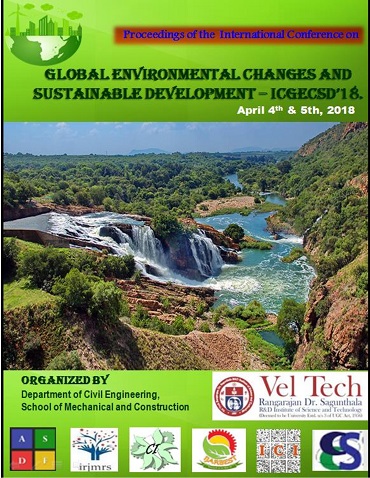- Publication Meta:Value
- Short Title:ICGECSD 2018
- Publisher:ASDF, India
- ISBN 13:978-81-933584-6-7
- ISBN 10:81-933584-6-5
- Language:English
- Type:Hard Bound - Printed Book
- Copyrights:ICGECSD Organizers / [email protected]
- Editor-in-Chief:Dr E B Perumal Pillai
- Conference Dates:04 - 05, April 2018
- Venue Country:Veltech R&D Institute of Science and Technology, Chennai, India
- Submitted Papers:230
- Acceptance Rate:8.12%
- Website:www.veltech.edu.in/icgecsd
Welcome to ASDF Electronic Digital Library!
ICGECSD 2018
ICGECSD 2018
International Conference on Global Environmental Changes and Sustainable Development 2018
Paper 091
Integrated Approach to Assess Vulnerability of Coastal Region of Tamil Nadu Using Invest Model
M A Mohammed Abdul Azeez1, M Shanmugam2, Tune Usha3, M Iyyappan4, G Gopinath5
1,2Institute of Remote Sensing, Anna University, Chennai, India
3,4,5Integrated Coastal and Marine Area Management Project Directorate, Ministry of Earth Science, Chennai, India
Abstract
As a consequence of changes in global climate, there is an increase in frequency of natural hazards such as storm surges, tsunamis and cyclones, which is bound to have dramatic effects on the coastal communities and ecosystems by virtue of devastation they cause during and after their occurrence. The current study focuses on assessing the vulnerability of the coastal districts of Tamil Nadu. The December 2004 tsunami devastated the coastal regions of India. Since then many studies have been carried out to assess the vulnerability of Indian coasts. However, no study has considered the role of natural habitats in mitigating these disasters. This study focuses on assessing the biophysical vulnerability of Tamil Nadu and role of natural habitats using In VEST 3.3 model. To simulate the model nine parameters have been considered, such as geomorphology, relief, bathymetry, wind, wave exposure, natural habitats, surge potential, sea level rise and population. All the parameters were preprocessed, analyzed, rescaled, and ranked from very low to very high vulnerabilities ranges from 1 to 5. First the coastal vulnerability model was run along the coast with and without natural habitats. From this the Coastal Vulnerability of the coast with and without natural habitats was assessed. And finally the impact on coastal population has been presented as Population Vulnerability Index. Hence this paper can be used to make decision of whether the natural habitats is useful in that region or not and their effectiveness in damage mitigation will be made clear. This can be used by stakeholders to make sensible managerial decisions regarding the region under focus. Further, this study can be easily extended to other coastal regions.
Keywords
Author's Profile
Author profile can be generated and linked through our partners World Book of Researchers. To include your profile online Click Here. After it is approved, please email to edlib @ asdf.res.in to create a link with all the papers.
e-AID
ICGECSD.2018.091
Cite this Article as Follows
M A Mohammed Abdul Azeez, M Shanmugam, Tune Usha, M Iyyappan, G Gopinath. Integrated Approach to Assess Vulnerability of Coastal Region of Tamil Nadu Using Invest Model. International Conference on Global Environmental Changes and Sustainable Development (2018): 91. Print.
© 2010 - by EDLIB .
All Rights Reserved.

